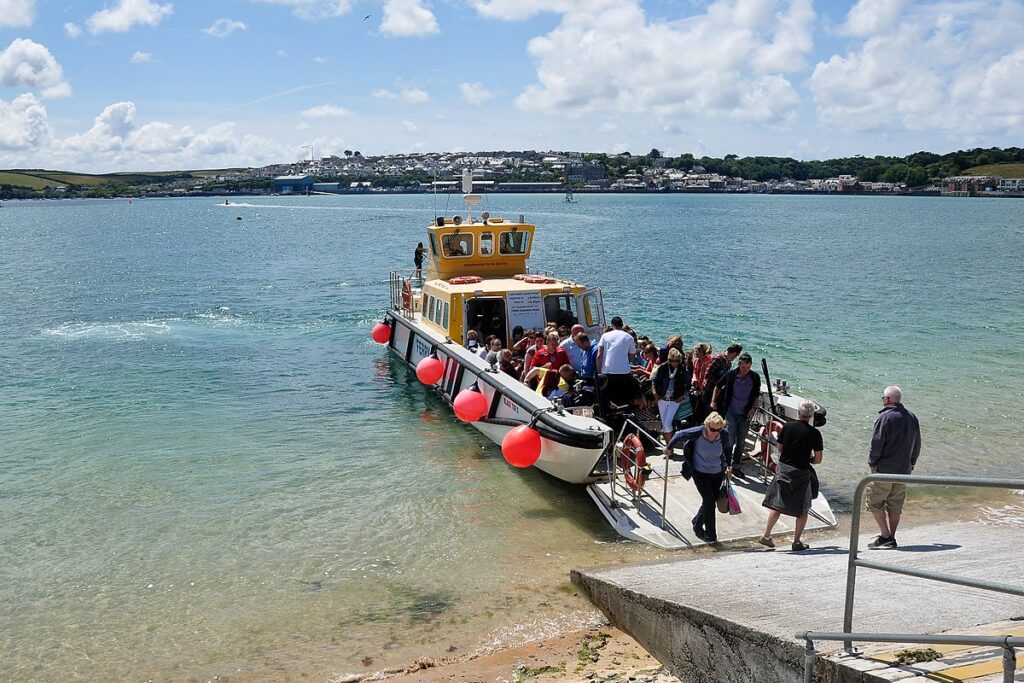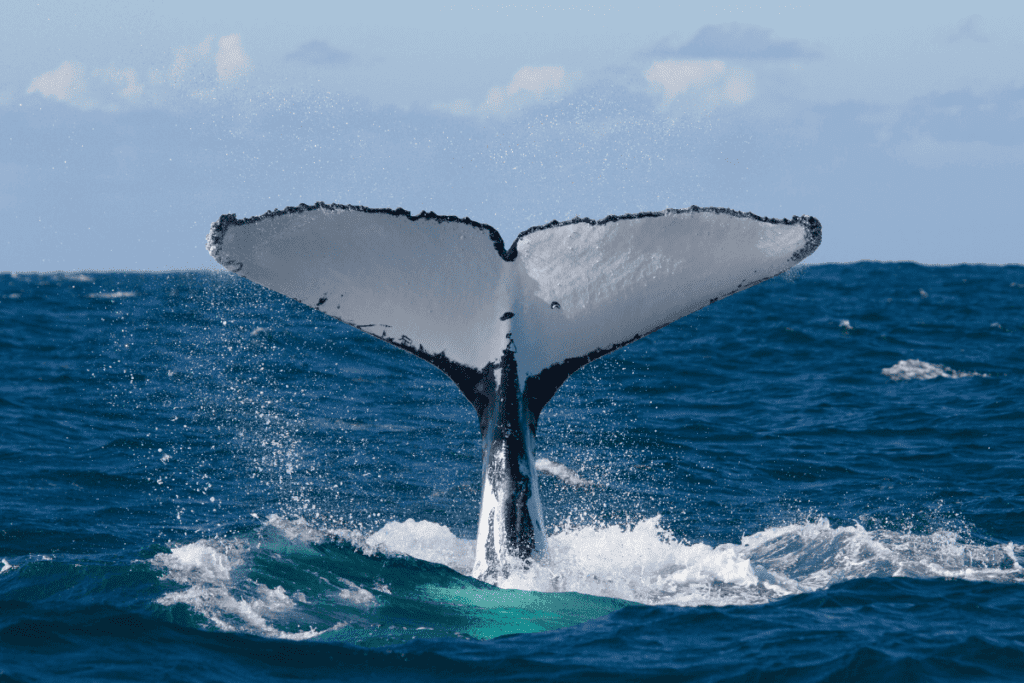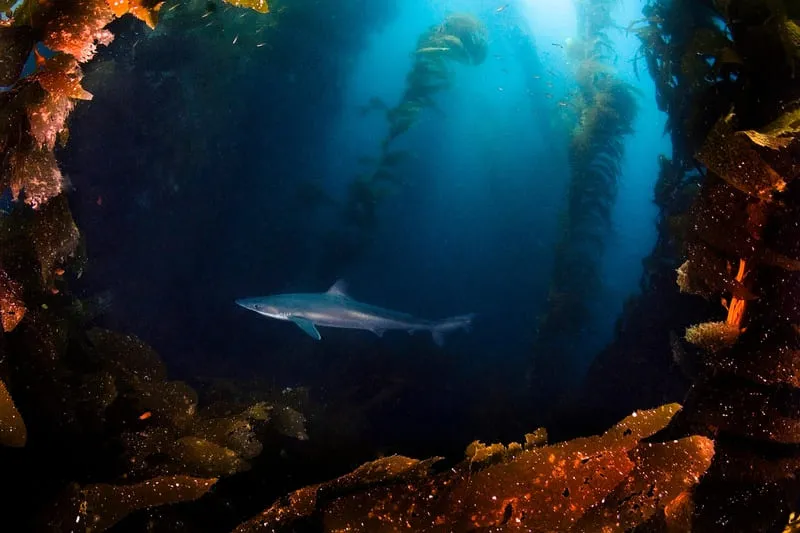Seals are some of the most captivating creatures in the animal kingdom, and their babies – known as seal pups – are no exception. Few sights on Cornwall’s stunning coastline can match the heart-melting charm of seal pups bobbing in the crystal-clear waters or basking on our rugged rocks. These adorable marine mammals are born right here along our shores each year, and as wildlife experts who’ve spent countless hours observing them in their natural habitat, we can tell you that baby seals are far more than just a pretty face. In this blog, we’ll explore what a seal pup is, where they’re born, how they grow, and the challenges they face in the wild.
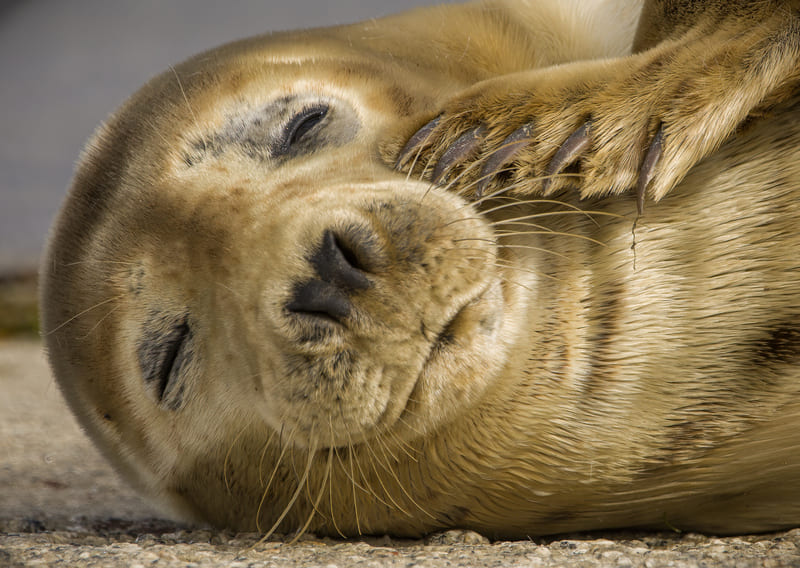
Understanding Baby Seals
Seal Species in Cornwall
Cornish waters are home to two species of seals: the grey seal (Halichoerus grypus) and the common seal (also known as the harbour seal, Phoca vitulina). Grey seals are the more numerous of the two, with an estimated 120,000 individuals around the British coastline, making up about 40% of the world’s entire population. It is thought the grey seal population in the southwest UK is estimated to be approximately 0.5% of the total UK population.
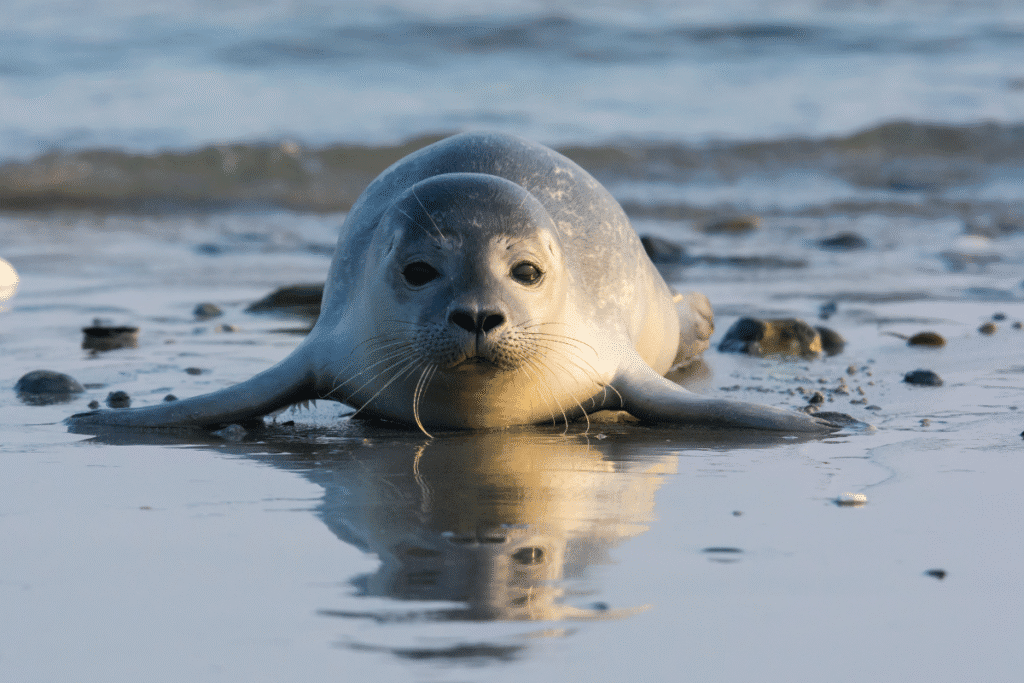
The Life of a Seal Pup: From Birth to Independence
Watching a seal pup grow from a helpless newborn into a confident ocean explorer is one of nature’s most remarkable transformations…
How Seal Pups Are Born
Grey seal pups are born on beaches and rocky platforms during autumn and winter, arriving into the world weighing around 14kg. The mother hauls herself out of the water, often returning to the same pupping site each year, and gives birth to a single pup after an 11-month gestation period.
Common seal pups are born in summer, either on sandbanks or rocky shores, and at around 10kg, they’re slightly smaller than their grey seal cousins. Both species are born tail-first, and within moments of birth, the devoted mother begins cleaning and bonding with her pup.
The First Few Weeks: Nursing and Bonding
Those early weeks are all about one thing: milk, and lots of it! Grey seal mothers produce incredibly fatty milk that helps pups triple their birth weight in just two to three weeks. Pups nurse several times a day, crying out with distinctive calls to locate mum when she returns from the sea. During this crucial bonding period, mother and pup learn each other’s unique scent and voice, creating a bond that ensures they can find one another even amongst other seals.
How Long Do Seal Pups Stay With Their Mother?
Grey seal pups stay with their mothers for approximately 3 weeks before being weaned. Once the pup has built up sufficient blubber reserves, the mother simply returns to the sea and doesn’t come back, leaving the pup to fend for itself.
Common seal pups have a longer nursing period of 3-4 weeks, during which they accompany their mothers into the water, learning to swim and dive from an early age.
After weaning, both species face a challenging transition period where they must teach themselves to hunt and survive independently.
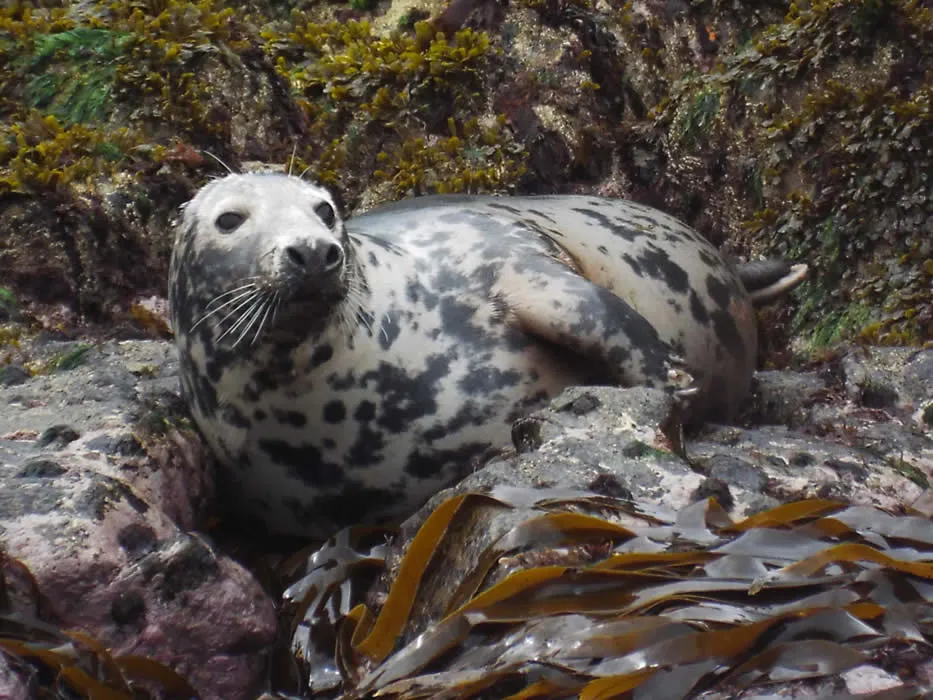
Seal Pup Development and Growth
From their first wobbly moments on shore to becoming skilled hunters, seal pups undergo an incredible transformation in their first year of life. Each developmental stage brings new challenges and milestones, and understanding these changes helps us appreciate just how resilient and adaptable these marine mammals truly are.
Why Are Seal Pups White?
Grey seal pups are born with their iconic white coats – called lanugo – for a very practical reason: insulation. This thick fur traps air to keep pups warm whilst they are building up their blubber layer. The bright white colouring is not fully understood, but is thought to be a relic from pups being born in snowy conditions during the last ice age.
Learning to Swim and Hunt
Once weaned, seal pups face their most formidable challenge: learning to survive alone. Seal pups will hone their diving skills, learning to hold their breath for longer periods of time, and eventually catch fish. Pups have to master hunting techniques through trial and error. Inexperienced pups face threats from harsh weather, sea conditions and strong currents. It’s a steep learning curve, and sadly, not all pups make it through this vulnerable period.
From Seal Pup to Juvenile
After just a few months, surviving seal pups have transformed into capable juveniles. Juveniles are often more social than mature adults, forming loose groups with other young seals, hauling out together on rocks and beaches to rest between feeding sessions. They will continue to grow for several years, with male seals eventually reaching up to 2.5 – 3 metres long and females around 2 metres.
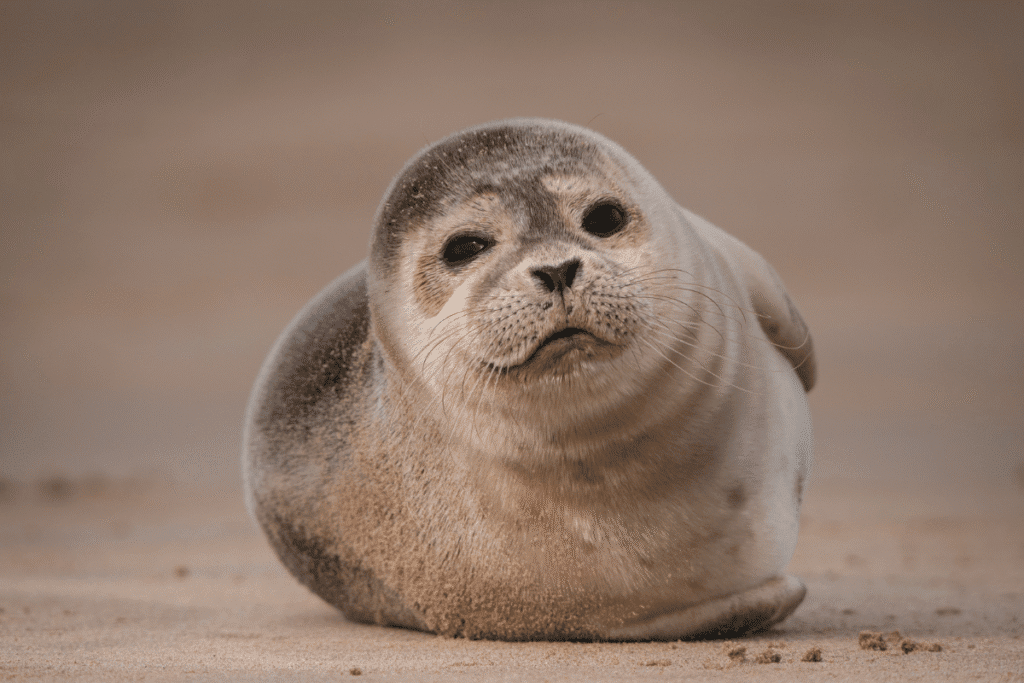
What Do Seal Pups Eat?
Seal pups initially survive entirely on their mother’s milk which contains roughly 60% fat – providing the concentrated calories pups need to build blubber. After weaning, pups must learn to catch their own fish, starting with small, easy prey like sand eels as they develop their hunting skills.
First Foods After Weaning
As they grow stronger and more experienced, their diet expands to include larger fish like mackerel, herring, and pollock, as well as squid and octopus. Adult seals around Cornwall can eat 4-5kg of fish daily, so pups must become efficient hunters to fuel their growing bodies and maintain their energy levels.
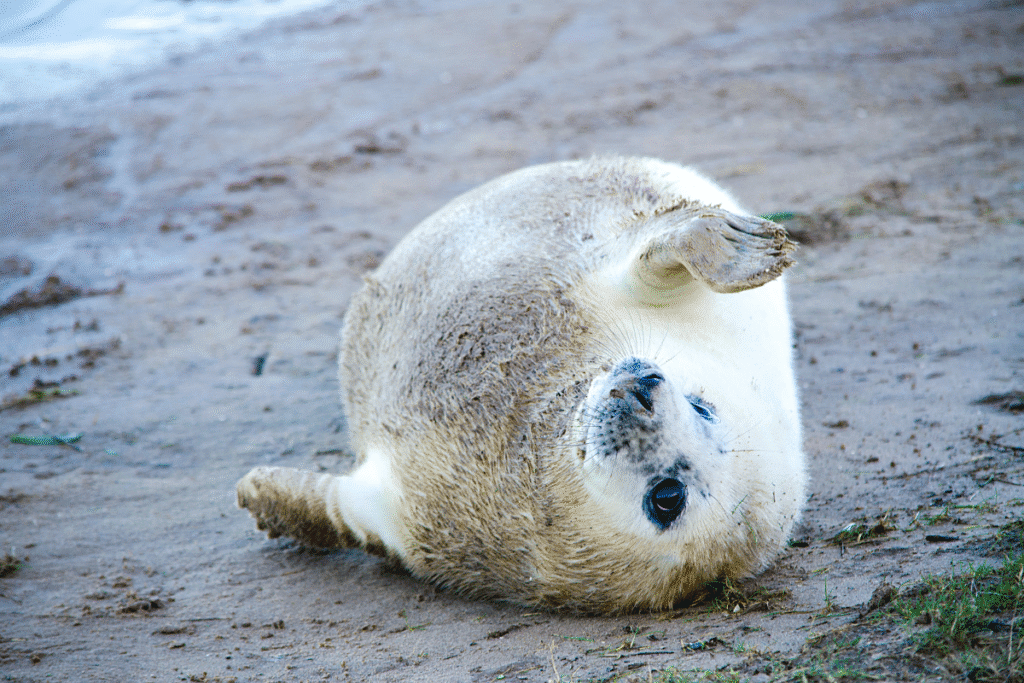
Seal Pup Behaviour
Understanding seal behaviour helps us appreciate what we’re witnessing and ensures we give them the space they need.
A banana-ing seal shows a relaxed and content behaviour often seen when seals are resting on land. In this pose, the seal lifts its head and hind flippers off the ground, curving its body like the shape of a banana. This posture helps the seal stay alert to its surroundings while keeping most of its body warm and dry.
Bottling seals show a resting behaviour that occurs when they float vertically in the water with just their heads visible above the surface – like a floating bottle. This position allows them to breathe easily while conserving energy.
Logging seals show a similar resting behaviour, but lie horizontally at the surface, resembling a floating log. In this position, their backs are exposed while they remain mostly motionless. Logging allows seals to rest and thermoregulate – warming up in the sun while still in the water. Both bottling and logging are calm, energy saving states that indicate the seal feels relatively safe.
When we glimpse seal interactions from the safe distance of our boat trips, we’re careful to read their body language – raised heads, wide eyes, flipper splashing, and vocalisations can all signal stress or disturbance, reminding us to maintain a respectful distance and let these magnificent animals interact naturally.
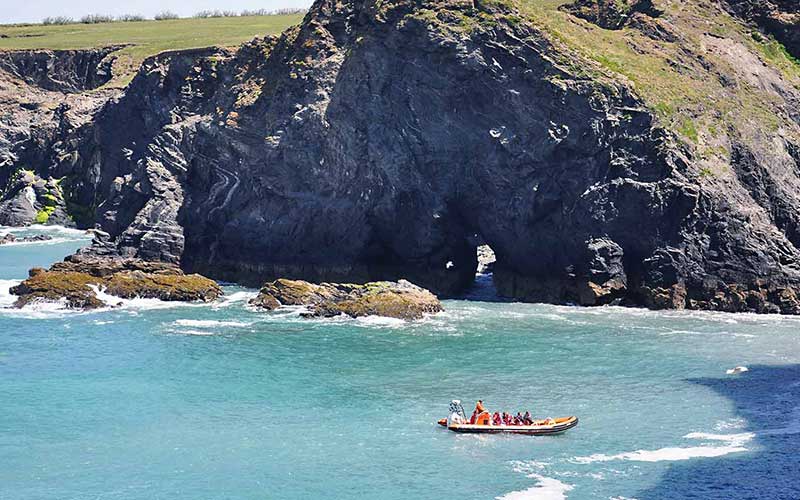
When Are Seal Pups Born in Cornwall?
Grey Seal Pupping Season
In Cornwall, the peak grey seal pupping season falls in September and October. Mothers choose remote beaches, caves, and rocky outcrops to give birth and will return to the same site each year to give birth.
Common Seal Pupping Season
Common seal pups arrive during the warmer summer months between June and August. Peak pupping typically occurs in July when conditions are milder and food is abundant. Common seals prefer to give birth on tidal sandbanks and rocky shores. Summer pupping gives common seal pups plenty of time to build strength and develop hunting skills before winter arrives.
Why Timing Matters for Wildlife Watching
Understanding seal pupping seasons helps you to plan the perfect opportunity to spot seals in Cornwall. Every season offers something special, and our experienced crew knows the best locations and times to maximise your chances of spotting wildlife whilst prioritising the welfare of these precious animals.
How to Watch Seal Pups Responsibly
Whilst seal pups are undeniably adorable, they’re wild animals that need our respect and protection to survive. At Padstow Sealife Safaris, responsible wildlife watching is at the heart of everything we do – we’re passionate about sharing Cornwall’s incredible marine life whilst ensuring our presence doesn’t disturb or harm these creatures. Following a few simple guidelines means everyone can enjoy magical seal encounters whilst keeping both seals and people safe.
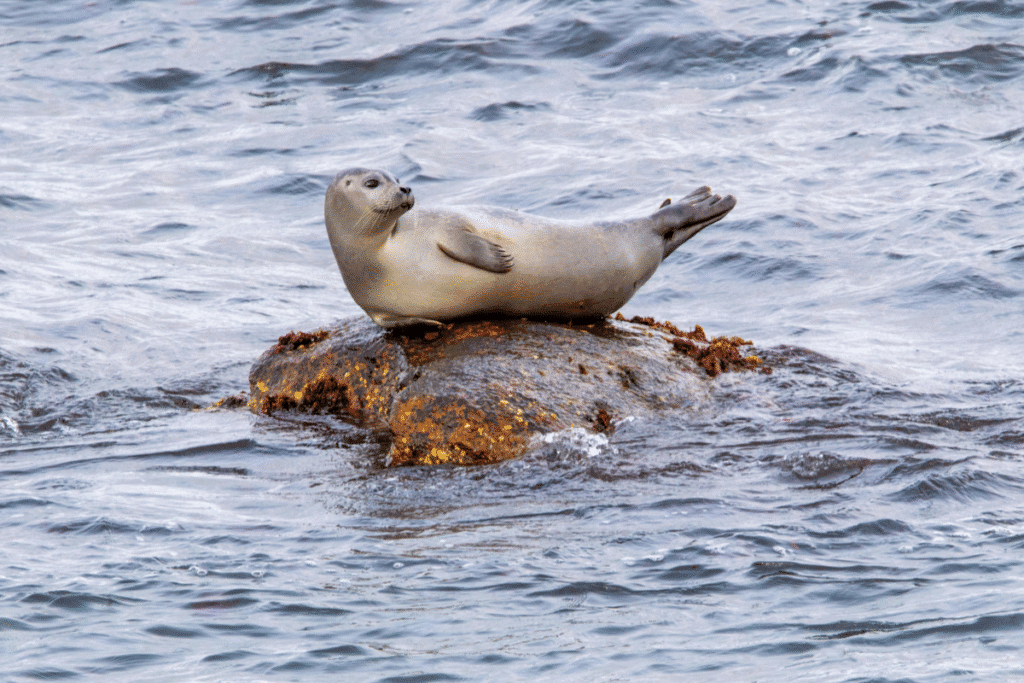
How to Watch Seal Pups Responsibly
Whilst seal pups are undeniably adorable, they’re wild animals that need our respect and protection to survive.
At Padstow Sealife Safaris, responsible wildlife watching is at the heart of everything we do – we’re passionate about sharing Cornwall’s incredible marine life whilst ensuring our presence doesn’t disturb or harm these vulnerable creatures. Following a few simple guidelines means everyone can enjoy magical seal encounters whilst keeping both seals and people safe.
The Seal Code of Conduct
When watching seal pups, always maintain a minimum distance of 100 metres on land and at least 50 metres from the water.
- Never approach, chase, or attempt to interact with seals – if they change their behaviour, move towards the water, or show signs of distress, you’re too close and should back away immediately.
- Keep noise levels down and movements calm, as sudden sounds or actions can frighten pups and separate them from their mothers.
- Never get between a seal and the sea, as this blocks their escape route and causes severe stress.
- Take photographs using zoom lenses rather than approaching closer, and never use drones, which can cause panic in seal colonies.
Can You Touch Seal Pups?
No, you should never touch seal pups under any circumstances. Touching or handling seal pups is dangerous for both you and the seal. Mother seals have powerful jaws and will aggressively defend their pups if they perceive a threat, potentially causing serious injuries.
Keeping Dogs Safe Around Seals
Dogs and seals are not a good mix, and keeping them separated protects both animals. Always keep dogs on leads around beaches and coastal areas known for seal activity, particularly during pupping season. Even a seemingly docile seal pup has sharp teeth and can deliver a painful bite if frightened. Additionally, dogs chasing or harassing seals causes extreme stress that can lead to abandonment of pups or injury as seals flee towards the water.
What to Do if You Find a Distressed Seal Pup
If you find a pup alone on the beach, resist the urge to physically intervene – mother seals often leave pups whilst they feed, then return later in the day.
As wildlife experts, we’ve learned that well-meaning intervention can sometimes do more harm than good. However, there are situations where a pup genuinely needs help, and knowing the difference – plus what steps to take – can save lives.
How to Tell if a Pup Needs Help
A seal pup needs professional help if it’s visibly injured with wounds, blood, or exposed bone, entangled in fishing nets, rope or plastic, or appears severely underweight with visible ribs and hip bones creating a “peanut” shaped body.
Who to Contact
If you have concerns for the health or welfare of a seal pup, contact British Divers Marine Life Rescue. When you call, be ready to provide the pup’s exact location (the what3words app is brilliant for this), a description of the pup’s condition, and any visible injuries.
A trained call handler will advise whether they need to attend or if the pup should be left alone. The call handler will coordinate any necessary rescue operation with trained responders.
What NOT to Do
- Never touch, pick up or move a seal pup – they bite when frightened and can transmit diseases.
- Don’t attempt to return a pup to the sea. It is likely the pup will be intentionally resting on a beach and forcing them into the water can cause exhaustion or drowning.
- Never pour water over a seal or attempt to feed it.
- Don’t cover the pup in blankets or towels as this can cause overheating.
- Avoid surrounding or crowding the pup with onlookers – this creates stress and may prevent the mother from returning.
- Don’t let dogs approach and resist the urge to take selfies or close-up photos.
- Most importantly, never assume a pup needs rescuing without first consulting trained professionals – human interference with healthy pups can lead to abandonment by anxious mothers.
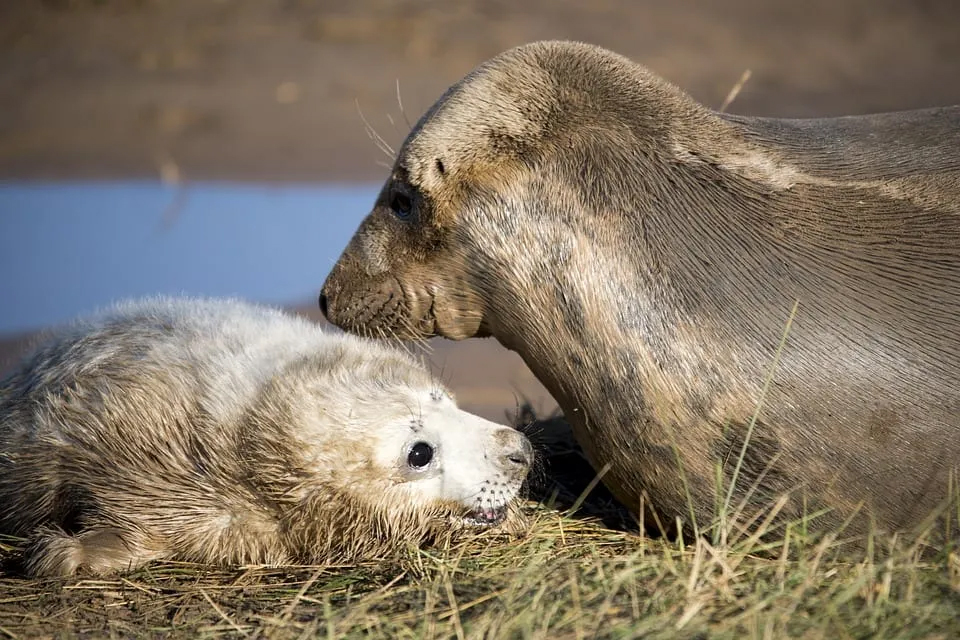
Seal Conservation and Protection
Seal pups develop a range of protection strategies to defend themselves from predators and human threats.
In the wild, seals rely on their agility in the water to escape natural predators like sharks and killer whales, using swift, darting movements and diving to great depths where predators may not follow.
On land, seals often haul out in large groups on remote, rocky shores where safety in numbers reduces individual risk.
Threats to Seal Pups
Human interference poses a significant threat to seal pup survival. Increasing coastal tourism brings people closer to seal breeding grounds, causing mothers to abandon their pups out of fear or stress. Beyond tourism, pollution in the form of marine debris creates hazards, entangling pups and preventing them from swimming or hunting properly.
To protect themselves from human disturbance, some seals have altered their behaviour, becoming more wary of human presence and avoiding heavily trafficked coastal areas. Climate change poses a serious threat to seals and their pups, affecting the availability of fish and other prey species. This makes it harder for seals to find enough food to survive. Warmer ocean temperatures and changing currents also disrupt migration patterns and breeding seasons.
How Cornwall Protects Its Seal Populations
Cornwall takes seal conservation seriously, with multiple organisations working together to protect our precious seal populations.
Cornwall Seal Group monitors known seal haul-out sites, and individuals to track their movement and behaviour to help understand population health and breeding success.
The Cornwall Seal Sanctuary rescues and provides expert care for sick, injured, or distressed seals who are in need of help before being released back into their natural environment once they are back to full health.
The Marine Conservation Society campaigns against marine litter and ghost fishing gear that entangle and kill seals.
How You Can Help
Every one of us can play a part in protecting Cornwall’s seal pups. Reduce your plastic use and participate in beach cleans – discarded fishing line, nets, and plastic packaging are major threats that entangle and injure seals.
Support responsible wildlife tourism by choosing operators like Padstow Sealife Safaris who prioritise animal welfare and follow best practices.
Consider supporting marine protection organisations and charities through donations or citizen science projects. Even small actions make a difference – together we can ensure future generations enjoy the magic of watching seal pups along Cornwall’s beautiful coast just as we do today.
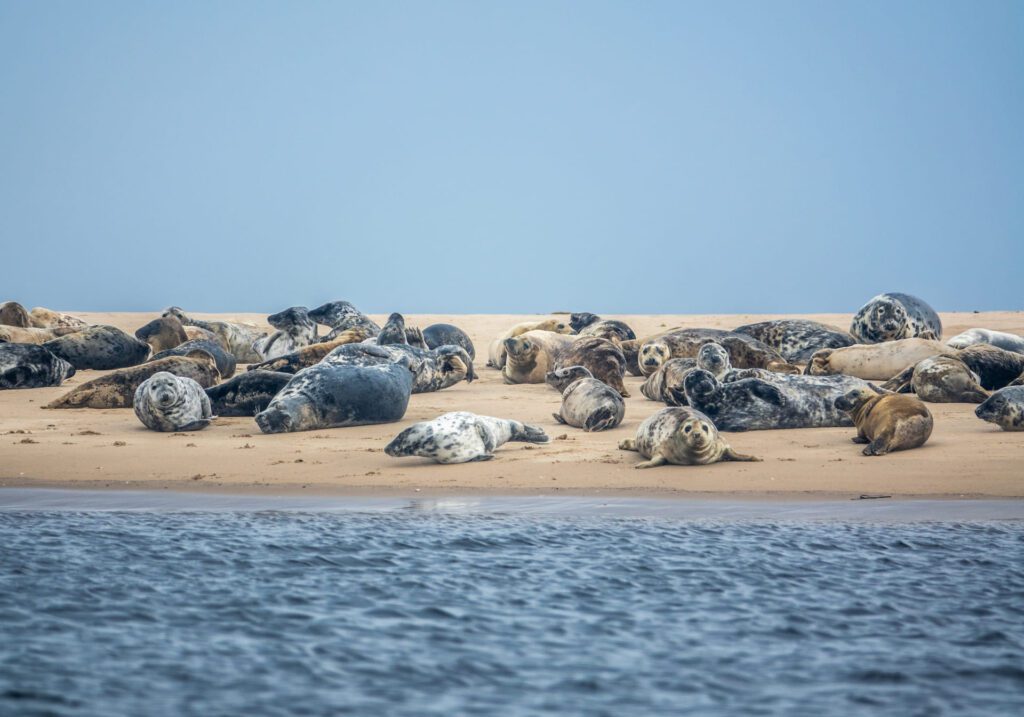
Frequently Asked Questions About Seal Pups
When to see seal pups in the UK?
Grey seal pups are best seen between September and October, with peak numbers in September. Common seal pups arrive earlier, from June to August, with July being the busiest month.
How long do seal pups stay with their mothers?
Grey seal pups stay with their mothers for just 3 weeks before being weaned. Common seal pups have a slightly longer nursing period of 3-4 weeks.
How big are seal pups when they’re born?
Grey seal pups are born weighing around 14kg, whereas common seal pups are slightly smaller, weighing approximately 10kg at birth.
How fast do seal pups grow?
Grey seal pups grow rapidly during their early weeks. They can reach 45kg in just three weeks by feeding on their mothers milk. Common seal pups typically gain up to 2kg per day during the first month. By the time they have weaned they can have tripled their birth weight, reaching around 40kg.
Can seal pups swim immediately?
Both Common and grey seal pups can swim within hours of birth. However, grey seal pups are covered in lanugo fur which is not waterproof, meaning they can only spend short periods of time in the water before they get cold.
Do seal pups have any predators?
In certain parts of the world seal pups do face several natural predators such as sharks and killer whales. However in Cornwall the main threat to seal pups survival is attack from large, dominant males who may attack vulnerable newborns.
How can you tell a male seal pup from a female?
It’s virtually impossible to tell male and female seal pups apart visually – they are the same in size and appearance when young. Only trained experts examining them up close can determine sex. Sexual dimorphism (visual differences between males and females) don’t develop until seals reach maturity.
What sounds do seal pups make?
Seal pups are very vocal! They make barking, grunting and moaning noises, especially when calling for their mum. You will also hear crying and wailing sounds, particularly from hungry or anxious pups. Mothers and pups use these unique vocalisations to recognise each other amongst colony noise
Are seal pups dangerous?
While they look cuddly, seal pups are wild animals. Seal pups can and will bite when frightened or approached. Even young pups have sharp teeth capable of breaking skin and causing infections. The real danger comes from protective mothers who will aggressively defend their pup.
Why do some seal pups look abandoned?
Mothers regularly leave their pups alone on beaches whilst they hunt for food or rest – this is completely normal behaviour. Grey seal mothers may be gone for several hours at a time.
